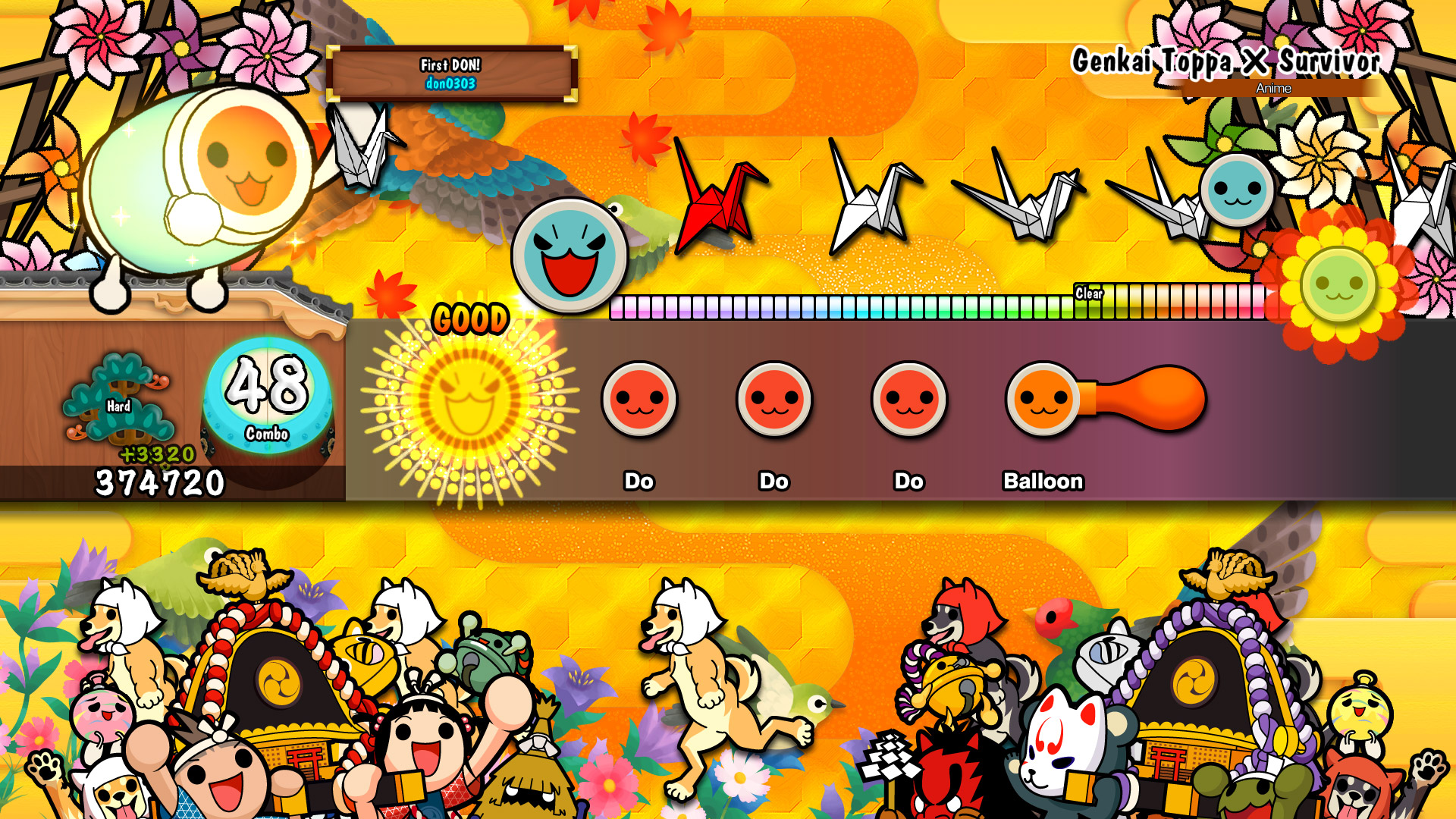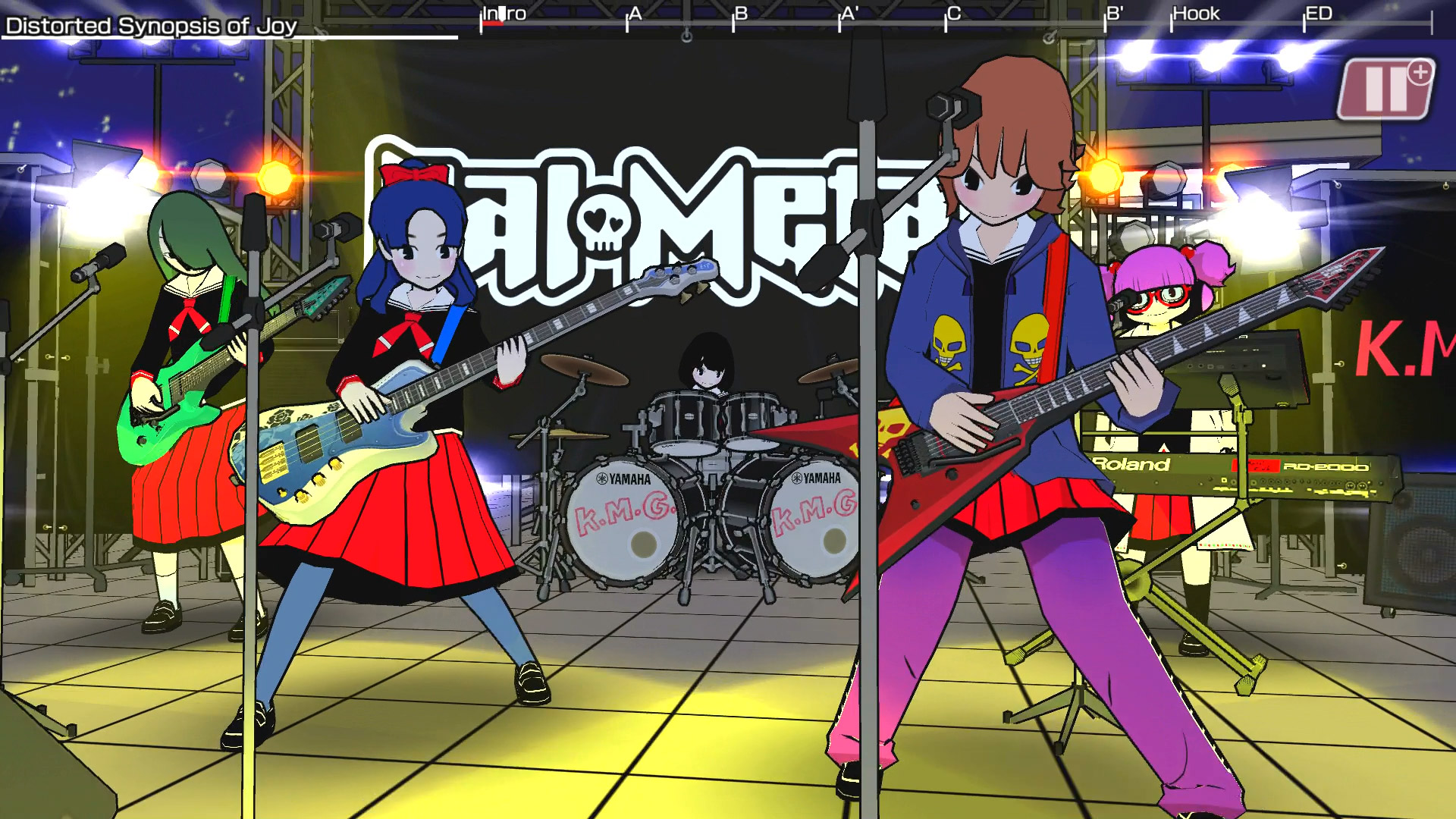Don’t Sleep on This Fall’s Three New Rhythm Games
Over the years, I’ve watched as the rhythm game genre has grown from early efforts like Parappa the Rapper on the original PlayStation (back when we didn’t even have a category to properly put it in) to a booming and legitimate branch on the great gaming genre tree. So, imagine how I felt when, over the past couple of weeks, we’ve gotten three major rhythm game releases here in North America, all at almost the same time. (Not to mention we’re about to get two more in Persona 3: Dancing in the Moonlight and Persona 5: Dancing in the Starlight on December 4th.) Since I knew I wouldn’t have the time to review them all individually, I decided instead to bring them together into one big look at what’s new for fans of the genre (or those gamers simply looking for something a little different).
| Publisher: Enhance Inc Developer: Monstars Inc, Resonair Platforms: PS4 |
Tetris Effect |
If you were to ask me about all of the video game projects and ideas that I might want, a version of Tetris produced by Rez creator Tetsuya Mizuguchi would never, ever have come up in my mind. Sure, his puzzle series Lumines exists in the same genre as Alexey Pajitnov’s legendary franchise, but it’s always felt like they were miles apart from one another. Lumines was the series I went to when I wanted to relax with a mix of ethereal beats and pop hits, all set on top of trance-inducing backdrops. And Tetris is, well, Tetris—a concept often at its best when it feels almost Cold War-era, USSR utilitarian, stripped of its fanciness and visual/audial splendor and any other frills that would make one dream of a better life off in the West.
And yet, let’s be fair: Tetris is also the perfect “chill and zone out” kind of game. So, it ends up that Tetris Effect is the equivalent of mixing your chocolate and peanut butter, taking two things that can stand on their own and combining them to create a smooth, delicious new experience. I now feel stupid for never having known that I wanted a game like this, because hot damn is it good. Mizuguchi’s love of inducing synesthesia in players is a perfect fit for the simplistic (yet complex) gameplay design of Tetris, and while I wouldn’t go so far as to say that this is my favorite iteration on the original game’s ideas to this date—something like Tetris DS is equally wonderful in a very different way—it certainly now stands as one of the best.
That’s helped—much like Tetris DS, in fact—by the inclusion of additional modes that let you position tetriminos and clear lines in a variety of ways. Journey mode is an interesting take on the idea of a Tetris campaign, as you make your way through the game’s soundtrack and included skins by completing sets of songs. Meanwhile, Effects mode is less about making progress and more about simply playing Tetris in a way that fits your current mood. You can pick your favorite song and clear lines until you fail in endless mode, select a playlist based around various themes such as “sea” and “world,” or focus on completing challenges in an attempt to climb to a good spot on the global leaderboards. I do, however, have to say that I’m disappointed there’s no way to play endless while advancing (after clearing X amount of lines) through each of the songs. As it is now, you’re stuck playing the entire time on the one song/stage you chose.
Across all of these choices, Tetris Effect also provides a great set of customization options, tweaking elements such as the piece queue, ghost piece display, tetrimino colors, initial rotation, and more. Those come along with the ability to rotate and zoom the playfield, which sometimes seems like a gimmick, and other times is actually a nice chance to change things up.
It’s quite possible that you’ve heard of Tetris Effect but have written it off as “that VR Tetris game.” I will tell you that, as someone who doesn’t play games in VR (because they can’t play games in VR due to motion sickness), this is not simply a showcase for virtual reality with little to offer beyond that. Tetris Effect is a fantastic, fully-featured new way to experience the beloved puzzle series that completely stands on its own—but which can then also be played using Sony’s headset. No matter if you’re a longtime Tetris fan, someone new to puzzle games, or simply a person looking for a gaming experience a little different from the norm, Tetris Effect is an easy recommendation to pretty much everyone who enjoys good games.
| Publisher: Bandai Namco Developer: Bandai Nanco Platforms: PS4, Switch |
Taiko no Tatsujin: Drum Master Taiko no Tatsujin: Drum ‘n’ Fun |
In the weird and wild world of Japanese rhythm games, Taiko no Tatsujin has always held a special place in my heart. Part of the subgenre of releases that rely on very specialized (and, at times, costly) controllers, Bandai Namco’s series focuses on Japanese taiko drums, with arcade cabinets that instantly catch the eye due to their full-sized drum replicas. Grab a pair of bachi (the wooden sticks), strike the drum’s surface or clack them against its outer rim, and you’ve got yourself a rhythm game.
While series releases have been prolific in Japan, things haven’t fared so well on our shores. Taiko: Drum Master hit the PlayStation 2 in North America in 2004 with a very Westernized selection of songs, and then—well, that’s it, at least until now. Fourteen years later, we’re finally seeing the series again, this time through two separate releases: Taiko no Tatsujin: Drum Session on PlayStation 4, and Taiko no Tatsujin: Drum ‘n’ Fun on Nintendo Switch.
It’s interesting that, after so many years of nothing, we get two franchise games at the exact same time that offer up differing experiences—and with both, somewhat shockingly, retaining their original Japanese soundtracks.
For that reason, I’ve ended up leaning more toward Drum Sessions. As a longtime fan of Japanese music, the PS4 version’s larger selection of hit singles is really up my alley, from The Blue Hearts’ Linda Linda, to Jitterin’ Jinn’s Natsumatsuri, to X Japan’s Kurenai, to Babymetal’s Gimme Chocolate!!. (Seriously though, can we please stop assuming that’s the only Babymetal song we can ever use in music games?) The rest of the music selection fills out with a smaller sampling of anime, Vocaloid, variety (think the Hello Kitty theme or viral hit Pen-Pineapple-Apple-Pen), classical, game, and Namco original tracks, giving the game a music library that never feels extensive, but is at least nicely varied. The main pull of the PS4 version is then its focus on competitive play. As you play, the game creates “ghosts” that represent how you did in any particular song, and you can then face off against the ghosts of other players as you attempt to raise (or at least avoid dropping) your standing in ranked mode. All songs also have a bingo card that you fill out as you complete track-specific challenges, with the credits they give unlocking new options for customizing your avatar.
Over on the Switch side, Drum ‘n’ Fun’s music selection didn’t endear itself quite as much to me. Still, I think it might be the more popular choice for more casual fans, as the anime offerings are better, and the game music section contains some Nintendo-related tracks. Drum ‘n’ Fun also puts more focus on bringing people together, which starts with its Party Mode. One to four players can jump into a nice variety of mini games, each falling under either co-op, versus, or team versus rules. You can also connect two, three, or four players through local wireless play, meaning impromptu Taiko no Tatsujin competitions can break out anywhere enough people have Switches and copies of the game.
Drum ‘n’ Fun then offers up and additional option that looks to address the main issue that’s always faced Taiko no Tatsujin: its controls. While drum controllers came out for both games in Japan, neither is coming to the States, meaning most play on either version will be through the use of traditional buttons—and, at that point, some of the charm of the series gets lost. On the Switch, you can remove the two Joy-Cons and use them as virtual bachi, which works well enough if you’re playing more casually or can really get the hang of using that method. For me, motion controls for rhythm games are just too inherently imprecise, so buttons it is.
While I wish we were getting the full Taiko no Tatsujin experience over here, I’m still thankful that both Drum Session and Drum ‘n’ Fun made it our way—and with their track lists intact to boot. Though I’m certain the series will always remain niche on our shores due to just how Japanese it is, I’m always thankful to have another option for picking up these games beyond importing.
| Publisher: XSEED Games Developer: DMM Games Platforms: Switch |
Gal Metal |
Whether you know Tak Fujii for his role in Konami’s infamous E3 2010 press conference, his work on a variety of that company’s projects, or for simply being an engaging member of the Japanese development community, it’s hard not to be won over by the enthusiasm he shows for his creative efforts.
That was the case for me with Gal Metal. The Switch-only rhythm game initially caught my eye due to its gorgeous art style, created by Japanese artist Toshinao Aoki (who I’d known from his various manga releases). Then, however, I found out that the game would only be playable with motion controls, and I started to get worried. I got the chance to catch up with Fujii at E3 this year when we sat down for a demo of Gal Metal, and it was hard not to feel some excitement for the game grow again hearing how enthusiastic he was about the ideas and gameplay his team had implemented.
The core of Gal Metal presents an experience that you don’t often see in a lot of other rhythm games. As you play, you’re presented with a series of four-beat rhythm patterns that correspond to being the drummer of your band (which I’ll get to in a moment). Each note marker is one of two colors—red or blue—and you flick the corresponding Joy-Con to hit that note. Where things get interesting is that, when playing each song, there’s no notes or suggested patterns on screen. Once you’ve learned each rhythm pattern, it’s up to you to decide when to play them to create the song’s drumline.
This offers up a legitimately neat twist to how things usually work, as there’s a feeling of actually being the drummer and needing to decide how you’re going to dictate the flow of the beat. Also, Gal Metal expects you to actually learn instead of just following along; if you don’t remember the various patterns (or aren’t creative enough to come up with them on your own), you’re not going to get a high enough score to get anywhere. At the same time, what makes Gal Metal stand out also creates a decently high barrier of entry, as remembering numerous beat patterns probably isn’t going to be easy for many.
As I said above, I’m typically not a fan of motion controls in rhythm games—but they work here. There were still times when I didn’t fully feel in control, or when the Joy-Cons would read movements I wouldn’t want them to, but more often than not I found myself having fun pretending to play the drums. Well, at least when away from a television, using the Switch’s main screen propped up on a table or desk. There’s something about the game that feels off when playing on a TV, and with no option for adjusting input lag (a common problem with rhythm games running on HDTVs), I can’t know for certain if that’s the disconnect I was feeling at times.
What then helps cement Gal Metal as a proud member of the “wacky but adorable Japanese rhythm games” club is its campaign. As the game begins, a random unnamed high school boy and a fellow female student named Rinko are kidnapped by aliens, who explain that they’ll soon be destroying the earth. It seems, in this world, the golden record carried upon the Voyager space probe was filled with heavy metal music, which caused a good chunk of the alien race to die off from excessive headbanging. Now, the two high-schoolers—both in control of Rinko’s body—must convince the other members of K.M.G. (Kichijoji Metal Girls, the band Rinko is a drummer in) to rock out in order to take out the coming alien invasion.
The story is incredibly silly and nonsensical, but I say that in a good way. Rinko’s bandmates are all full of personality and help drive the story along, and between practice gigs and the confrontations with the aliens, you can interact with them around town. These segments offer you the chance to build up Rinko’s stats through meeting her friends, working part-time jobs, or partaking in other activities, giving you some sim-esque side content that you normally wouldn’t expect to find in a rhythm game.
Gal Metal is one of those kinds of releases where I could write a list a mile long on how it could be better, but where its weirdness, awkwardness, and lack of certain polish actually helps give it its charm. It reminds me of Um Jammer Lammy, Gitaroo Man, or Osu! Tatakae! Ouendan (Elite Beat Agents in the West), where I think trying to make the game better would instead end up making it worse. Gal Metal certainly isn’t for everyone, but it’s a fun little music-filled adventure for those who can appreciate its quirks.



